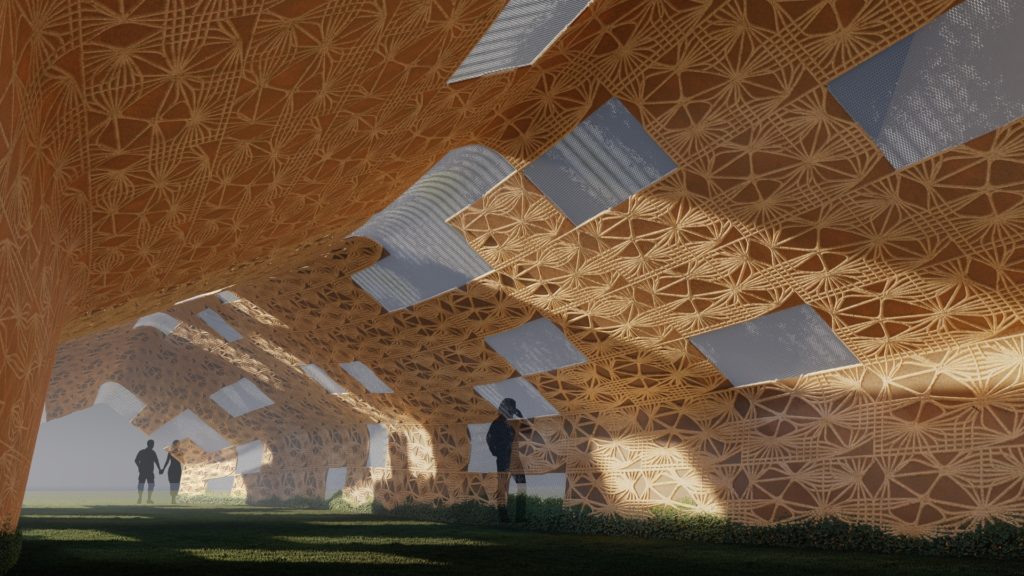
Posidonia Oceanica
In the Mediterranean, most plant debris is made up of the species Posidonia Oceanica (L.) Delile, asuperior plant that is endemic to this sea.
It forms extensive meadows from the shallowest areas of the coast to variable depths, depending on how deep light can penetrate the water to enable photosynthesis to take place. Similar to other phanerogam plants, it has leaves, roots, a subterranean stem or rhizome, flowers and fruit. The leaves are ribbon-like and distichous, forming a fascicle in each of the rhizomes, and grow from a basal meristem over a period of time that varies between four and eleven months.
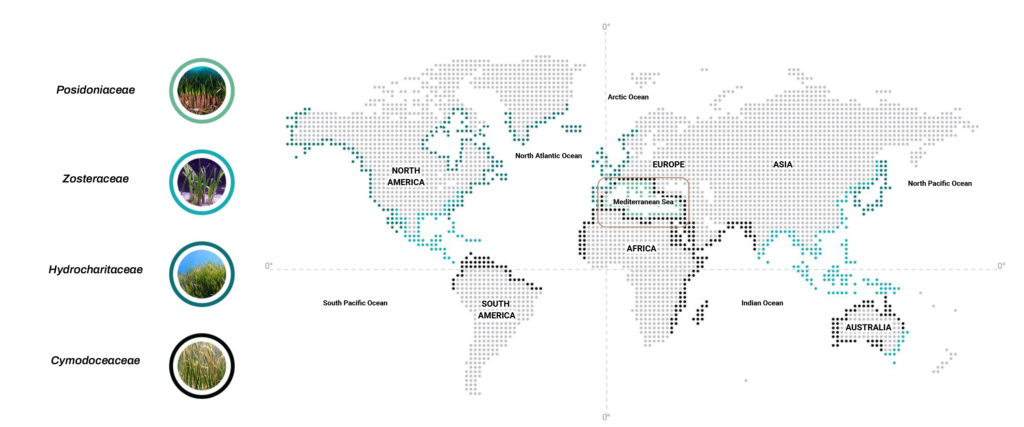
chrome-extension://efaidnbmnnnibpcajpcglclefindmkaj/http://www.ecologialitoral.com/_movil/files/4515/6465/6752/Guia_Seamatter_ENG.pdf
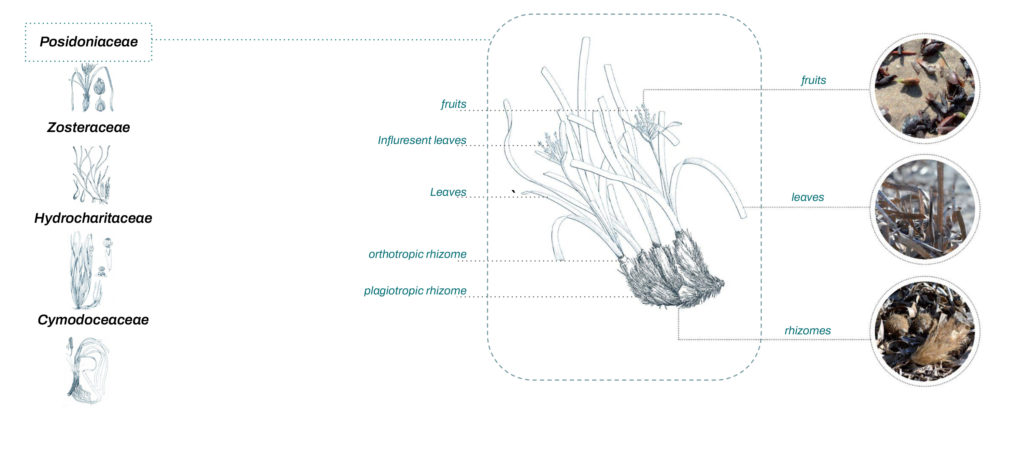
https://www.grida.no/resources/13590
Issue
Marine plant debris waste accumulates along the Mediterranean coast, emitting an intense odor associated with the decomposition of organic matter. Posidonia is treated as a waste and is removed and disposed of in a landfill is removed from beaches mainly for aesthetic reasons and usually from beaches considered as urban, i.e., beaches with infrastructures such as promenades, where the urban infrastructure and associated services take precedence over the natural concept of a beach, imposing a significant financial burden on coastal municipalities.
The removal of 1000 m3 of debris represents a loss of 19-44 m3 of sediment. This is mainly carried out by heavy machinery without the use of grid systems.

Issue + framework
Reusing Posidonia waste can provide environmental benefits such as recycling oceanic waste from the Mediterranean coast that is currently disposed of in a landfill. Similarly, Posidonia can be used to create a highly localized material, reducing transportation costs while also boosting the local economy in coastal areas and assisting the community in finding sustainable solutions.
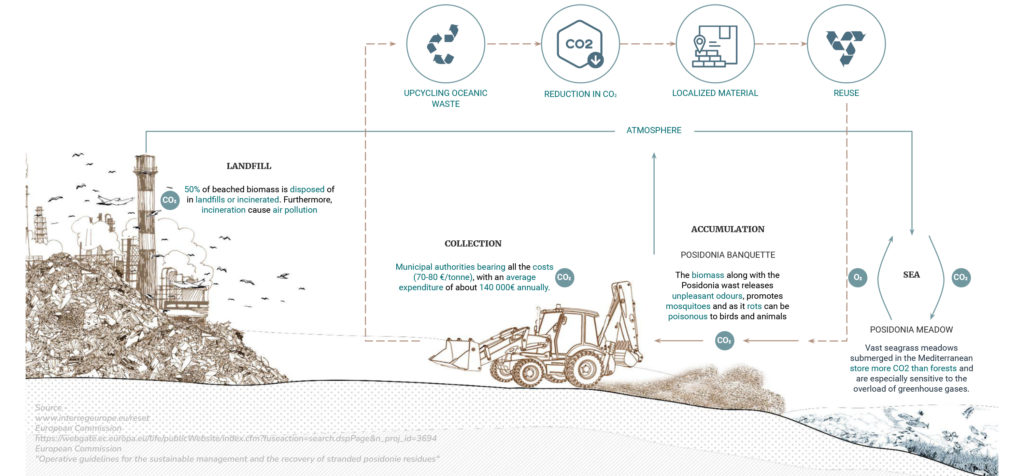
Scientific Interest
Can upcycling Posidonia Oceanica in new material systems using modern technology create environmentally friendly waste management options?
This is of particular interest in terms of the green economy and the reduction of CO2 emissions as an indirect effect obtained by improving waste recycling.
Posidonia Properties


State of the Art – Posidonia (Seagrass)

State of the Art – Eelgrass (Seagrass)
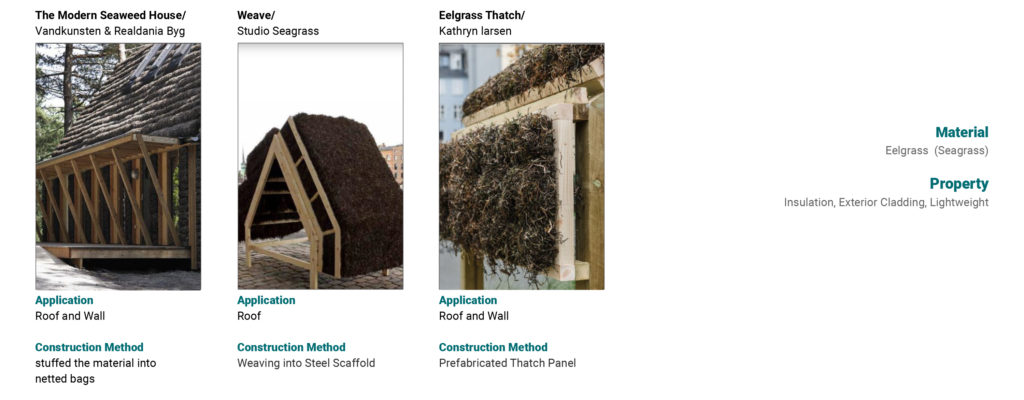
State of the Art – Conclusion

Thesis Statement
Annual accumulations of Posidonia Oceanica (PO) [Mediterranean seagrass] are extracted from the Mediterranean coast due to the intense odor of organic decomposition. PO is lightweight and resistant to fire, water, fungus and rot which makes it too valuable to throw away, this readily available renewable material which offers opportunities for architectural design integration. The goal of this study is to develop a material system based on Posidonia Oceanica that will provide a comprehensive structural system for insulating roofs, exterior façades, and interior walls combining traditional materials with unconventional construction and fabrication methods.
Distribution
Mediterranean sea
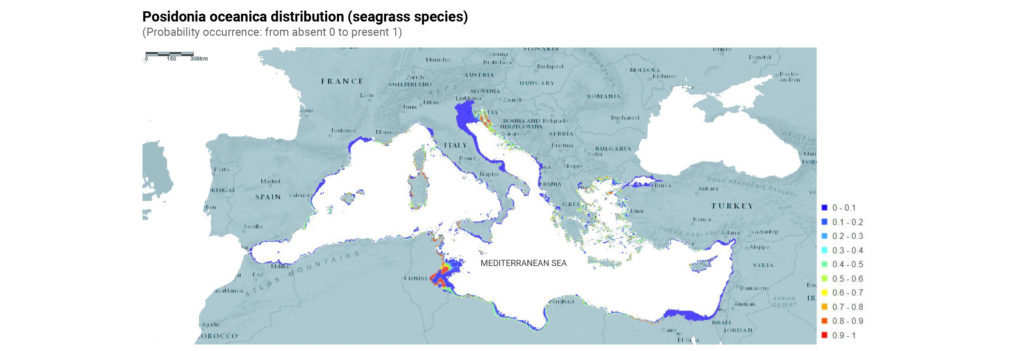
High Distribution
Mediterranean sea
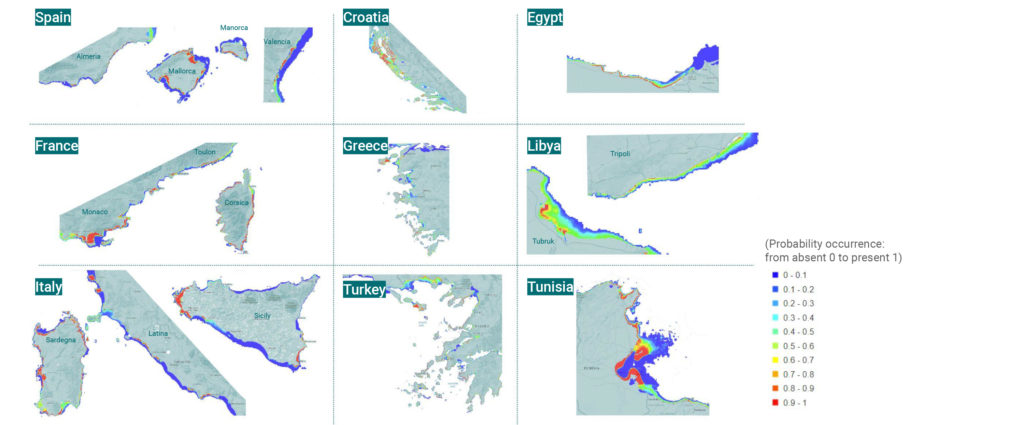
Collection
Mediterranean coast
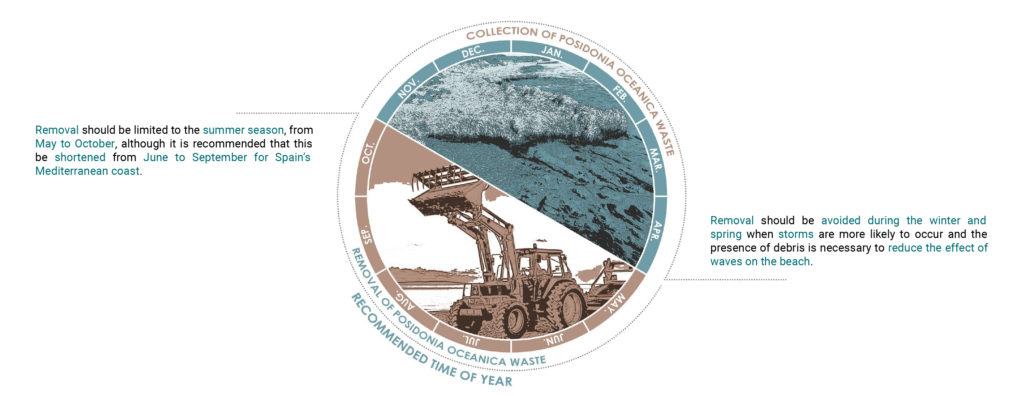
Collection
Mediterranean coast
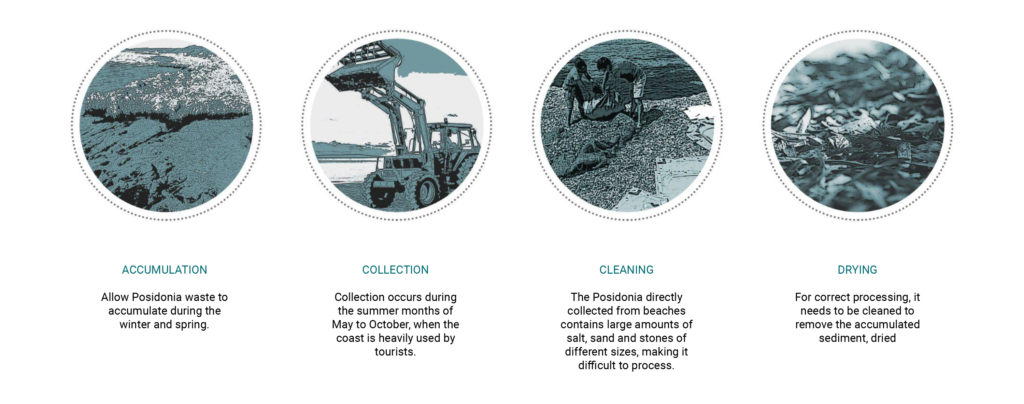
Experiment 01a
Binder Test [Glueing]

Experiment 01b
Binder Test [Glueing]

Experiment 02a
Compression Test
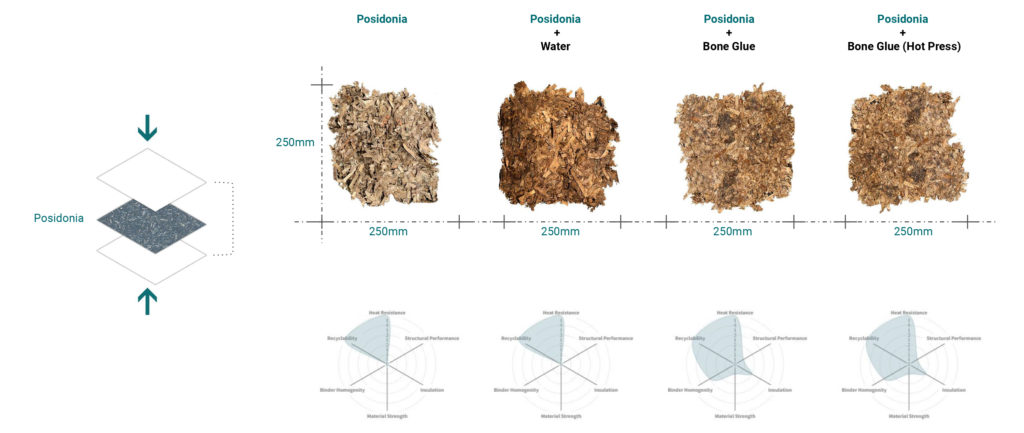
Experiment 02b
Compression Test
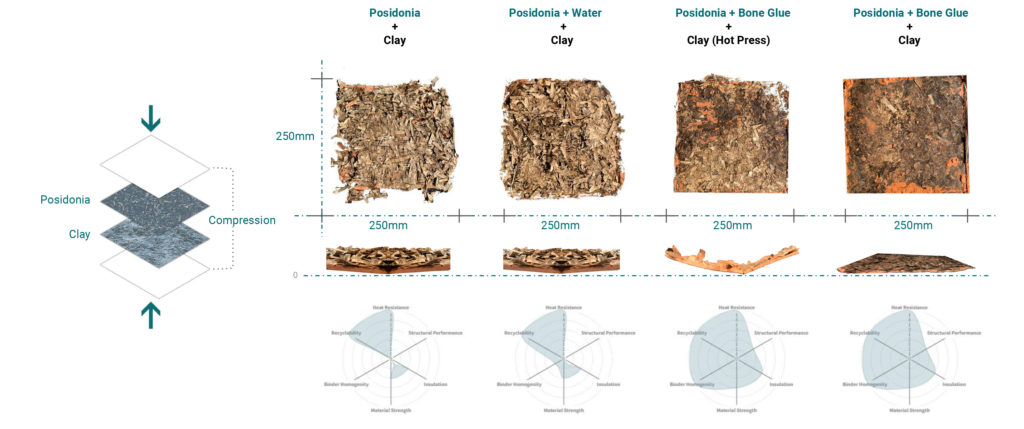
Experiment 03a
Binding Test

Experiment 03b
Binding Test
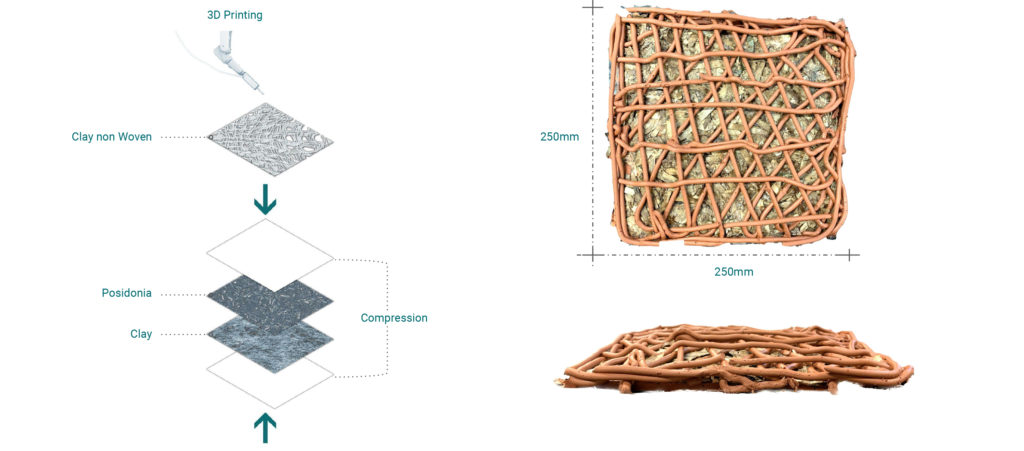
Experiment 03c
Binding Test

Experiment 03
Binding Test – Conclusion

Geometry
Weave Exploration


Geometry
Application
